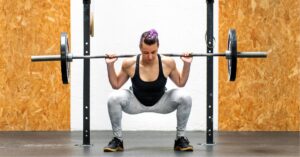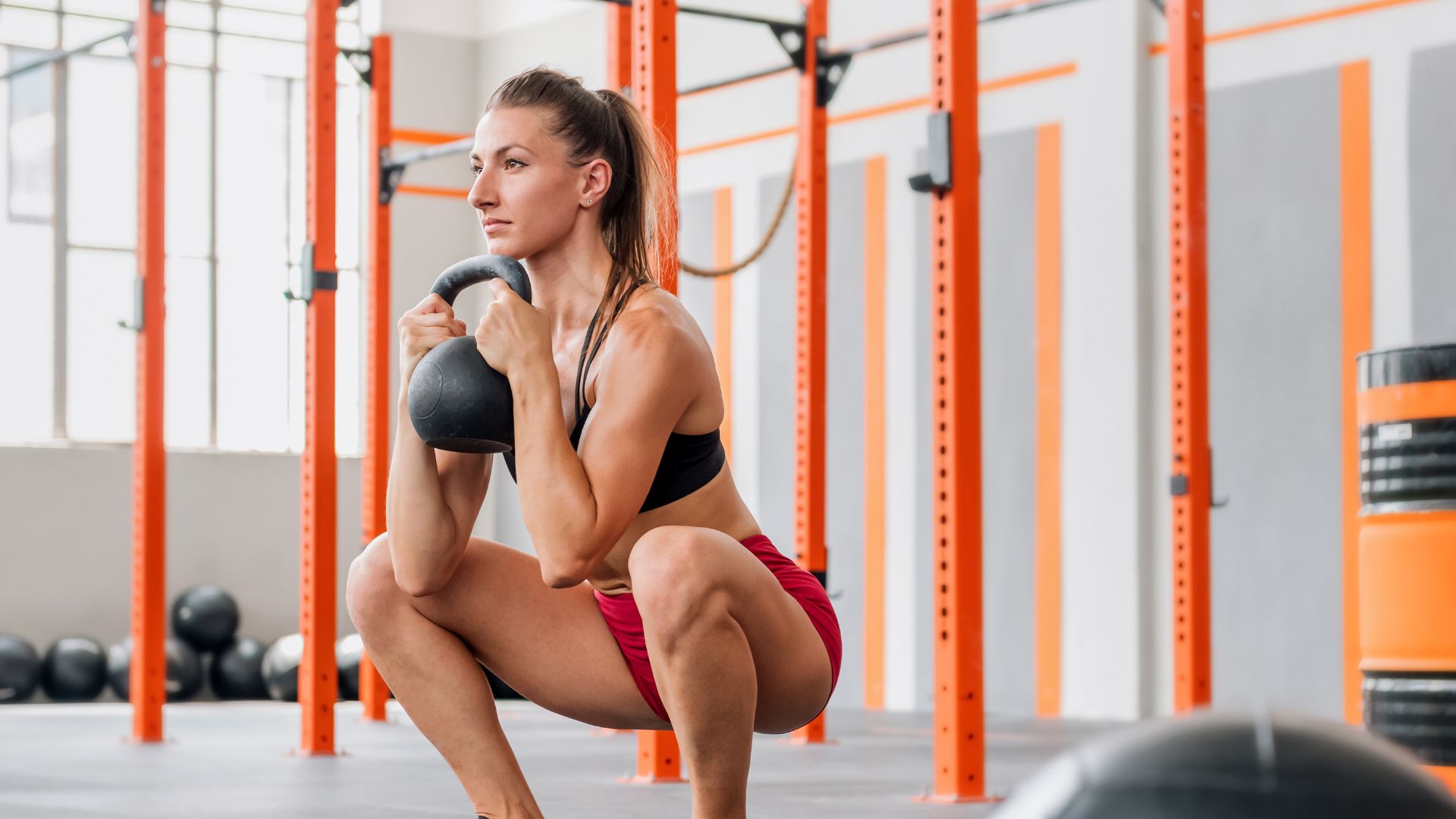Alright, fitness enthusiasts, let’s talk about one of the classic debates in the world of squats how deep should you really go?
We’ve all heard about the legendary ‘ass to grass’ squats, but is it a one-size-fits-all rule? Today, we’re diving into the nitty-gritty of squat depths, breaking down the pros and cons, and helping you figure out just how important it is to touch those glutes to the ground.
So, whether you’re a gym regular or just getting started on your fitness journey, buckle up because we’re about to unravel the mystery of the perfect squat depth!
Exploring the importance of squatting to the absolute lowest depth.
Squatting to the absolute lowest depth, often referred to as “ass to grass” or ATG squatting, has its importance, but it may not be necessary or suitable for everyone.
The depth of your squat should depend on your fitness goals, mobility, and individual circumstances.
Here are some factors to consider:
Mobility and Flexibility: Squatting to a very low depth requires good hip, ankle, and knee flexibility.
If you lack mobility in these areas, attempting ATG squats can lead to poor form and injury. In such cases, it’s more important to work on mobility before going for deeper squats.
Goals: The depth of your squat should align with your fitness goals. If you’re a powerlifter, you may need to squat to competition standards, which typically require breaking parallel (hip crease below the top of the knee).
If you’re training for general fitness, aesthetics, or athletic performance, parallel squats or slightly below may be sufficient.
Safety: Squatting too low with improper form can increase the risk of injury, especially if you’re lifting heavy weights.
Maintaining a controlled and safe range of motion is crucial. Going too low with improper form can strain your lower back, knees, and hips.
Individual Anatomy: Not everyone’s body is built the same way. Some individuals may find it difficult to achieve an ATG squat due to their unique anatomical structure.
Attempting to force a deeper squat in such cases may lead to discomfort or injury.
Muscle Activation: A full-depth squat does engage a broader range of muscles, including the hamstrings and glutes.
However, squatting to parallel or slightly below can still effectively target the quadriceps, which might be sufficient for your training goals.
Progression: It’s essential to progressively work on your squat depth. Start with what’s comfortable and gradually increase the range of motion as your mobility and strength improve. This gradual approach can help you avoid injuries.
In other words, squatting to absolute lowest depth has its benefits, especially for powerlifting or when targeting specific muscle groups.
Still, it’s not a universal requirement for everyone. Always prioritize safety, proper form, and your individual circumstances when determining the depth of your squats.
If you’re unsure, consider working with a certified fitness trainer who can assess your mobility and provide personalized guidance.
Further Explanations.
Let’s dive deeper and elaborate further on all the points mentioned.
Firstly though, let’s delve deeper into the importance of mobility and flexibility, as well as how your fitness goals influence the depth of your squats:

1. Mobility and Flexibility:
Hip Mobility:
Squatting deeply requires hip mobility, specifically the ability to externally rotate and flex the hips.
If your hips are tight or lack the necessary range of motion, attempting deep squats can lead to poor form. Insufficient hip mobility can cause the lower back to round or the knees to cave inward, increasing the risk of injury.
Ankle Mobility:
Adequate ankle dorsiflexion (the ability to flex your foot upward) is crucial for maintaining an upright posture during a deep squat.
Limited ankle mobility can result in the heels lifting off the ground or the torso leaning forward excessively, which can strain the lower back and knees.
Knee Flexibility:
While not as significant as hip and ankle mobility, knee flexibility is still important. Tightness in the knee joint or surrounding muscles can restrict your ability to descend into a deep squat comfortably.
2. Goals:
Powerlifting:
In powerlifting competitions, squat depth is strictly regulated, with the requirement that the hip crease must descend below the top of the knee (breaking parallel). To excel in powerlifting, you must train to meet these standards and maximize your strength within that range of motion.

General Fitness and Aesthetics:
For individuals focused on general fitness, aesthetics, or overall lower body development, squatting to parallel or slightly below is often sufficient.
This range of motion effectively targets the quadriceps, glutes, and hamstrings while providing a balance between strength and safety.
Athletic Performance:
Athletes, depending on their sport, may benefit from different squat depths. For example, deep squats can be valuable for sports requiring agility and quick direction changes, while parallel squats might be more suitable for others.
To further emphasize the point, it’s crucial to tailor your squat depth to your specific needs and abilities.
If your goal is to improve your squat depth, prioritize mobility and flexibility work to gradually expand your range of motion.
This might include hip, ankle, and knee stretches, mobility drills, and exercises to strengthen the muscles supporting these joints.
Working with a knowledgeable coach or physical therapist can provide a personalized assessment of your mobility limitations and help design a training program that aligns with your goals while minimizing the risk of injury.
Remember, safety and proper form should always be the top priorities in any squatting routine.
let’s explore the importance of safety and the influence of individual anatomy when it comes to squatting:
3. Safety:
Squatting with improper form, especially when attempting to go too low, can significantly increase the risk of injury. Common injuries associated with improper squatting technique include lower back strains, knee issues, and hip problems.
When you squat too low without proper control and alignment, you place excessive stress on your lower back because it may round or hyperextend. Additionally, your knees might experience shearing forces or instability, and your hips can become misaligned.
Lifting heavy weights while attempting deep squats with improper form compounds the risk. The heavier the load, the more critical it is to maintain good form to prevent injury.
4. Individual Anatomy:
Each person’s body has unique anatomical characteristics that can influence their ability to squat deeply and comfortably. These differences include hip socket depth, femur length, tibia length, and more.
Some individuals may have hip joints that are shaped in a way that makes it challenging to achieve an ATG squat without discomfort or strain. For example, individuals with deep hip sockets might find it harder to reach extreme depths.
Femur and tibia length can also affect squat form. Longer femurs relative to the tibia may require a more forward-leaning torso during squats, which can limit how deep one can comfortably go without compromising form.
Attempting to force a deeper squat when your anatomy isn’t conducive to it can lead to discomfort, pain, and, in the worst cases, injury. It’s important to respect your body’s natural limitations.
In light of these factors, it’s essential to prioritize safety and form over depth.
Here are some tips to ensure safe squatting:
Learn Proper Technique: Before attempting deep squats, master the correct squatting technique, including maintaining a neutral spine, bracing your core, and keeping your knees in line with your toes.
Start with Body Weight: Begin with body weight squats to ensure you can maintain proper form before adding external weight.
Gradual Progression: If you’re working on improving your squat depth, do so gradually. Increase the range of motion as your mobility and strength improve.
Use Supportive Gear: Consider using lifting shoes or squatting with heel lifts if ankle mobility is a limiting factor.
Consult a Professional: If you have unique anatomical considerations or mobility issues, seek guidance from a certified trainer or physical therapist who can provide personalized advice and exercises to address your limitations.
Remember that while deep squats have their benefits, such as engaging a broader range of muscles, safety and injury prevention should always be the top priority in your training regimen.
let’s explore the significance of muscle activation and the importance of gradual progression in your squatting routine:
5. Muscle Activation:
A full-depth squat, such as an ATG squat, engages a broader range of muscles compared to squats that only go to parallel or slightly below. These additional muscles include the hamstrings, glutes, and the lower back to a greater extent.
The depth of your squat influences the muscle groups that are activated. When you squat to parallel or slightly below, the primary emphasis is on the quadriceps, the muscles on the front of the thigh.
If your training goal is to specifically target the quadriceps for hypertrophy (muscle growth) or strength development, squats to parallel or slightly below can be highly effective.
6. Progression:
Gradual progression in your squat depth is a fundamental principle of safe and effective strength training. Here’s why it’s important:
Safety:
Progressing gradually allows your body to adapt to increased demands without overstressing your joints and muscles. This reduces the risk of injury.
Mobility and Technique Improvement:
As you gradually increase the depth of your squats, you give your body time to improve mobility and refine your squatting technique. This ensures that you maintain proper form as you go deeper.
Strength Development:
Gradual progression also enables your muscles to strengthen progressively, which is crucial for long-term growth and performance improvement.
Consistency:
By avoiding excessive discomfort or injury, you’re more likely to stay consistent with your training program, which is essential for achieving your fitness goals.
To apply these principles effectively in your squatting routine:
Choose the Right Depth: Select the squat depth that aligns with your training objectives. If you want to emphasize quadriceps development, squats to parallel or slightly below can be effective. If you aim for a broader range of muscle activation, work on gradually increasing your squat depth over time.
Start with a Comfortable Depth: When starting, use a squat depth that feels comfortable and allows you to maintain proper form. This might be above parallel until you’ve built sufficient strength and mobility.
Incrementally Increase Depth: Over weeks or months, progressively work on increasing the depth of your squats. You can do this by adding small increments or using various mobility exercises to improve flexibility.
Listen to Your Body: Pay attention to your body’s signals. If you experience pain or discomfort beyond what’s typical for muscle fatigue, consider dialing back the depth and focusing on form and mobility work.
Incorporating gradual progression and selecting the right squat depth based on your goals are key strategies for optimizing your squatting routine while minimizing the risk of injury.
Remember that consistency and patience are key to long-term success in strength training and fitness.
A tabular on this topic here.
Here’s a table summarizing the importance of squatting to the absolute lowest depth:
| Aspect | Importance |
|---|---|
| Mobility and Flexibility | Crucial for safe and effective deep squats. Without proper mobility, attempting ATG squats can lead to poor form and injury. |
| Goals | Depends on your fitness goals. For powerlifters, it’s essential to meet competition standards. For general fitness or aesthetics, parallel squats or slightly below may suffice. |
| Safety | Prioritize safety and proper form over depth. Squatting too low with improper form can lead to injuries, especially when lifting heavy weights. |
| Individual Anatomy | Not everyone’s body is built the same way. Anatomical factors can affect squat depth. Trying to force deeper squats with unsuitable anatomy can lead to discomfort or injury. |
| Muscle Activation | Full-depth squats engage a broader range of muscles, including hamstrings and glutes. However, parallel squats can still effectively target the quadriceps, depending on your goals. |
| Progression | Essential to gradually work on squat depth. Starting with what’s comfortable and progressively increasing depth helps improve mobility and strength while reducing injury risk. |
This table provides a concise overview of the importance of squatting to the absolute lowest depth, taking into account various factors such as mobility, goals, safety, individual anatomy, muscle activation, and progression. It highlights that the importance of squat depth varies depending on individual circumstances and fitness objectives.
Conclusion here, How important is it to squat to the absolute lowest depth?
The importance of squatting to the absolute lowest depth varies based on individual goals, mobility, and safety considerations.
While deep squats engage a broader range of muscles, including hamstrings and glutes, they may not be necessary or suitable for everyone.
Safety and proper form should always be the top priorities, and the depth of your squat should align with your specific fitness objectives and anatomical limitations.

Hey there, it’s Mike Rrsq, the Editor-in-Chief over at Jsquat.com, and I’m absolutely obsessed with all things squat fitness! I’ve been lucky enough to get some serious recognition for my work in this field. With a solid background in the fitness and wellness industry, I’ve been there right from the get-go, helping shape this website into what it is today.
You see, I’m not just the boss around here; I’m also a passionate contributor. I love sharing my insights through my articles, and trust me, they’re not your run-of-the-mill stuff. Each piece I write is a labor of love, filled with my expertise and real-world experience in the fitness universe. So, if you’re into fitness and looking for some inspiration, you’re in the right place!

